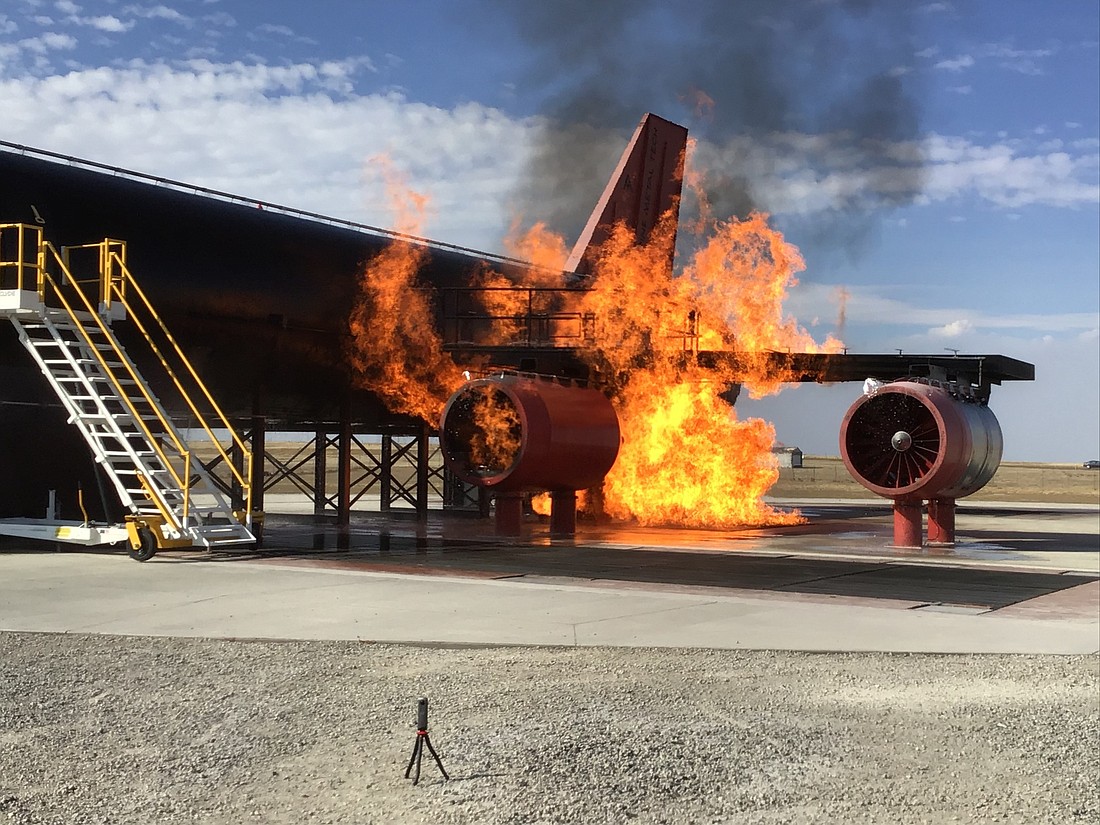- July 26, 2024
-
-
Loading

Loading

Project: Airport Rescue and Firefighter Simulator
Location: Fire Training Complex, 2597 Airport Road, Punta Gorda, Charlotte County. (Can be seen from Interstate 75, next to the 345,000-square-foot Cheney Bros. food distribution faculty.)
Cost: $9.4 million
Size: 3.9 acres
Builder: Wharton-Smith Inc., Sanford
Architect: Wilder Architecture, Tampa
Project details: Known in aviation and emergency management lingo by its acronym, ARFF, the simulator can replicate a variety of airplane fires for training purposes. “The whole thing is the exact size of an actual aircraft,” says Mike Nunez, a project manager with the North Port office of Wharton-Smith. “You will be looking at a real, live aircraft.”
Amenities of the simulator project, according to a fact sheet from Charlotte County, the client, include a large training pad, restrooms with showers, a covered seating area and a control room. Structures, beyond a fuselage that replicates an Airbus 320, include a propane storage area and a concrete burn pit for training.
When completed, the simulator will have the capacity to have real fires burning — up to seven at one time at temperatures of 3,000 degrees. The fires can range from the cockpit to the cargo bays, so firefighters can train on techniques and protocols across all potential scenarios. Fire training is required once a year for fighting fires on an aircraft with props, such as an engine or brake system fire, according to county officials. Training on an aircraft fuselage fires requires training every three years.
Cool factor: One of the coolest parts of the simulator, which broke ground in early 2021, says Caryn Huff, a project executive with Wharton-Smith, is how rare it is. The nearest official ARFF is in Denver, which the construction and design team checked out in person. “We wanted to put our eyes on it,” Huff says, “so we could have a better idea of what we are building.”
“There aren’t a lot of these in the U.S., or even the world,” adds Nunez, estimating there’s between 15 and 20.
That makes it not just a training site, but also an economic development engine for Charlotte County, which can bring in other fire departments from Florida and beyond. “This is really neat,” Huff says, “because Charlotte County can become the place to go for ARFF training.”
Challenges: One of the more unique parts of the project, say Nunez and Huff, is also one of the coolest: the intricacies of all the wiring and infrastructure underground that form the backbone of the simulator. Nunez likens it to a bowl of spaghetti. “That’s something you don’t see on a normal construction project,” Huff adds.
It goes 10 feet deep at some points, and, with lines of gas and chemicals, required a tremendous amount of 3D and building information modeling (BIM) to map out, says Nunez. “That took a lot of planning and a lot of meeting with a lot of people,” he says.
Like many other projects, the Wharton-Smith team hasn’t escaped supply delays and materials shortages. That particularly includes a weathering type of steel, called Cor-Ten steel, that forms the backbone of the airplane. County officials, in the fact sheet, updated Oct. 29, say the Cor-Ten vendor, Alpine Metals, has secured the steel and production of phase II of the simulator parts has begun. The simulator is expected to be completed by May.
The Cool Construction issue is, like it sounds, a deep dive into the more unique projects being built in the region — in what’s obviously an unusual time. Read about more of the coolest by clicking the links below: